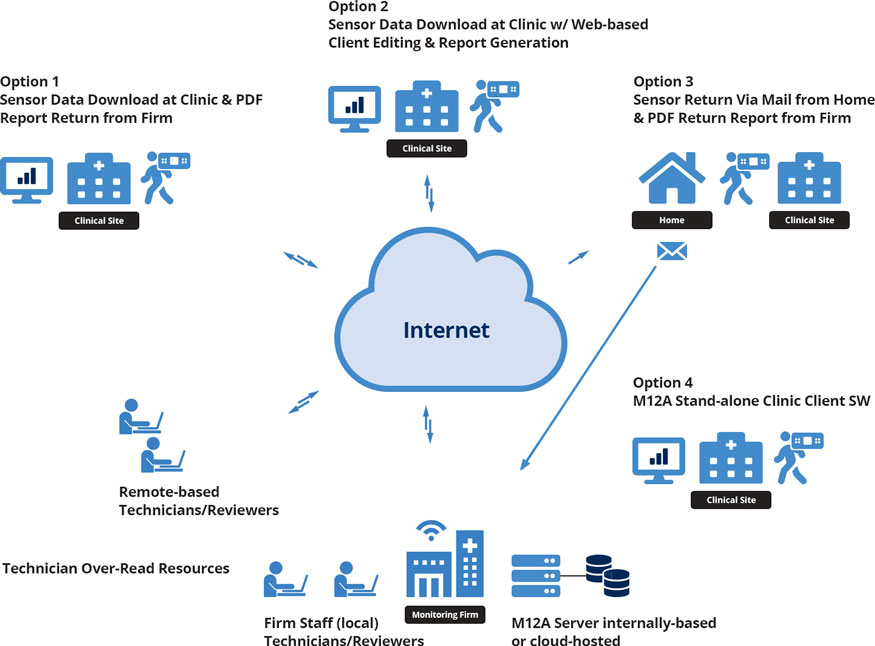
Revolutionizing Cardiac Care: The Impact of Remote Monitoring
In the ever-evolving landscape of healthcare, remote cardiac monitoring has emerged as a transformative technology, bringing significant advancements to the way we monitor and manage cardiovascular health. This innovative approach leverages technology to provide real-time insights into a patient’s cardiac activity, fostering proactive care and improving outcomes.
Understanding Remote Cardiac Monitoring: A Paradigm Shift in Healthcare
Remote cardiac monitoring involves the use of wearable devices equipped with sensors to continuously track and transmit a patient’s cardiac data to healthcare professionals. This shift from traditional in-office monitoring to continuous remote tracking represents a paradigm shift in cardiac care, enabling a more comprehensive and dynamic assessment of heart health.
Continuous Monitoring for Timely Intervention:
One of the primary advantages of remote cardiac monitoring is the ability to track cardiac activity continuously. Unlike intermittent in-office visits, this continuous monitoring allows healthcare providers to detect irregularities or abnormalities in real-time, facilitating prompt intervention and reducing the risk of complications.
Wearable Technology: The Heart on Your Sleeve:
Wearable devices, such as smartwatches and patches, have become integral to remote cardiac monitoring. These devices offer convenience and comfort to patients while providing healthcare professionals with a wealth of real-time data, including heart rate, rhythm, and other relevant metrics. Wearable technology transforms cardiac monitoring into a seamless and patient-friendly experience.
Early Detection of Cardiac Events:
The real-time nature of remote cardiac monitoring enables the early detection of cardiac events, such as arrhythmias or palpitations. By promptly identifying these events, healthcare providers can initiate timely interventions, prescribe necessary medications, or recommend lifestyle adjustments to manage and mitigate potential risks.
Improving Patient Engagement and Empowerment:
Remote cardiac monitoring fosters increased patient engagement and empowerment. Patients become active participants in their cardiac care, gaining access to real-time data about their heart health. This engagement not only enhances patient awareness but also encourages adherence to treatment plans and lifestyle modifications, contributing to better overall outcomes.
Reducing Hospitalization and Healthcare Costs:
The continuous monitoring provided by remote cardiac monitoring can help reduce the need for frequent hospitalizations. By proactively managing cardiac health and intervening early, healthcare providers can prevent the progression of cardiac issues, ultimately lowering healthcare costs associated with emergency room visits and extended hospital stays.
Challenges and Solutions in Remote Monitoring:
While remote cardiac monitoring offers numerous benefits, it also presents challenges. Issues such as data security, device reliability, and the need for patient education must be addressed. Collaborative efforts between healthcare providers, technology developers, and regulatory bodies are essential to overcome these challenges and ensure the widespread success of remote monitoring programs.
Telemedicine Integration: A Holistic Approach to Cardiac Care:
Remote cardiac monitoring seamlessly integrates with telemedicine platforms, creating a holistic approach to cardiac care. Telemedicine consultations allow healthcare providers to remotely review and discuss patients’ cardiac data, provide personalized guidance, and adjust treatment plans as needed. This integrated model enhances accessibility and convenience for patients.
Future Trends: Advancements in Remote Cardiac Monitoring:
As technology continues to advance, the future holds exciting prospects for remote cardiac monitoring. Innovations such as artificial intelligence (AI) algorithms for data analysis, more sophisticated wearable devices, and enhanced connectivity are expected to further improve the accuracy and effectiveness of remote monitoring, shaping the future of cardiac care.
In conclusion, remote cardiac monitoring is revolutionizing how we approach and manage cardiovascular health. This transformative technology not only enhances early detection and intervention but also empowers patients to actively participate in their cardiac care journey, marking a significant step forward in the realm of cardiovascular healthcare.
For more information on remote cardiac monitoring, visit CentrumZdravi.org.

